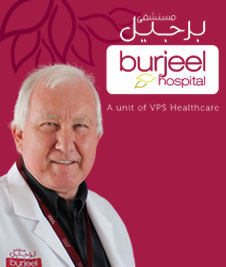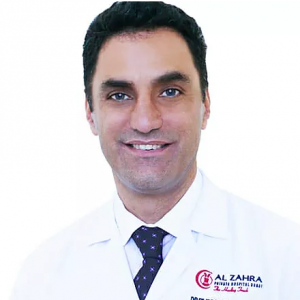Hiatal Hernia
Hiatal Hernia is a slipping/sliding condition, in which body part or organ (typically upper part of the stomach) abnormally pushes and bulges through the chest or opening area (hiatus) of the diaphragm. Apart from the stomach, other parts can also prolapse through the diaphragm by making the oesophagus oversized. Parts such as the small intestine […] Read More
Top Doctors For Hiatal Hernia Treatments
Top Hospitals For Hiatal Hernia Treatments
Hiatal Hernia
Hiatal Hernia is a slipping/sliding condition, in which body part or organ (typically upper part of the stomach) abnormally pushes and bulges through the chest or opening area (hiatus) of the diaphragm. Apart from the stomach, other parts can also prolapse through the diaphragm by making the oesophagus oversized.
Parts such as the small intestine and omentum ( fold that connects the stomach to abdominal organs) and transverse colon (a large part of the colon) are among the main ones. The diaphragm is positioned in the chest area and it detaches chest and abdominal region shape resembles a dome.
Hiatal hernia is seen in people with the age 45 or above and is very rare in children and toddlers. When it pushes more organs it becomes life-threatening as multiple organs weight sits in the thorax but in some people, no symptoms are seen and they don’t feel anything because stomach or abdominal organs aren’t pushed that much. Muscles become weak, holding organs becomes unbearable and this condition occurs.
There are two types of hiatal hernia which are noticed in people so far:
- Paraoesophageal – This type is observed in 15-20% of people so obviously it is rare. It contains a hernia sac and a portion of the stomach, omentum, small intestine or transverse colon protrudes through the diaphragm. Also, gastroesophageal junctions stay stable/fixed and don’t move at all, because of this reason, the type is also known as a fixed hernia. The person might need to hospitalize urgently if blood flow gets blocked around the stomach.
- Sliding Hernia – This type is observed in tons of people around 80-85% are suffering from this. In this condition stomach or other organs bulges through the diaphragm and comes back to the original position after sliding for some time. People don’t easily feel anything as everything happens in a fraction of seconds, mostly chain-smokers and obese people are susceptible to this.
Actually, hiatal hernia is of four types, another two are extremely rare, and very negligible chances of their happening are there. Names are Mixed and giant hiatal hernia.
Treatment For Hiatal Hernia
Generally, the condition doesn’t get that serious so treatment isn’t needed. But if symptoms are severe and uncontrollable then one should not wait for a minute to get the treatment. For acid reflux (a condition in which the stomach’s acid moves to the esophagus) and heartburn, medications are enough.
- Antacids – This counterpoises acid in the stomach. A patient can take the below-mentioned medicines by asking the doctor, to avoid side effects.
- Rolaids
- Maalox
- Tums
- Alka Seltzer
- Gelusil
- H2 Receptor Blockers – Slows down the formation of acid in the stomach. Best are:
- Cimetidine
- Nizatidine
- Proton pump inhibitors – pain caused to the oesophagus lessen with this.
-
- Esomeprazole
- Rabeprazole Sodium
- Omeprazole
- Pantoprazole sodium
Surgery For Hiatal Hernia
The aim of the surgery is to put each organ in its place permanently, to strengthen weak muscles around the abdomen, and to make the stomach, food pipe, small intestine, diaphragm, transverse colon, and omentum function properly.
Laparoscopic surgery is performed typically. In this laparoscope, the electric device is added in the abdomen after making some tiny or medium cuts, the surgeon ensures quick recovery less blood loss, less pain and scarring after the surgery.
Diagnosis Of Hiatal Hernia
Some different tests are required in these conditions, all are listed below.
- Barium liquid test – The doctor or lab assistant will give you a liquid to swallow which contains barium (white to transparent in colour which helps with the X-ray) to check the health of the oesophagus. The X-ray after this shows the digestive system’s functionality level to the doctor.
- Endoscopy test – The doctor will keep a narrow and thin tube inside your throat which easily passes to the oesophagus (food pipe) and maximum to the stomach to know the real reason behind the stomach’s bulging towards the chest or diaphragm.
- Oesophagal manometry test – Doctor checks esophagus and lower esophageal sphincter. A thin tube will be placed through your nose to esophagus and stomach, the procedure takes 15-20 minutes. The patient should be in a fasting mode.
Risk Factors Involved With Hiatal Hernia
- Overweight
- Past hiatal hernia
- Wearing tight belts
- History of gastro-oesophageal surgical procedure
- Age above 50
- Pregnancy
Diet For Hiatal Hernia
What to include in a diet?
- Fruits like bananas, apples, watermelon, etc.
- Vegetables like potatoes, sweet potatoes, spinach, peas, carrots, etc
- Whole grains like barley, millet, oats, quinoa, etc
- Eat vegan milk like almond, soy, etc.
- Cashews, almonds, pecans, brazil nuts, pistachios, etc.
What to exclude from a diet?
- Spicy food like paprika, tabasco, and jalapeno.
- Citrus fruits like orange, lemon, tomatoes, etc
- Avoid alcohol
- Reduce caffeine intake
- Onions and garlic
Symptoms
People with a sliding hernia don’t have any symptoms sporadically, fixed type also doesn’t show any symptoms initially. Some are:
- Belching – Excessive gas comes out from the swallowed air.
- Heartburn
- Non-bilious vomiting
- Epigastric pain
- Shortness of breath
- Chest pain
- Uneasiness
- Trouble in swallowing the food
- Acid reflux
Causes
- One of the prominent cause is muscle weakness
- An injury such as trauma due to falling from a height or accidents
- Enlarged hiatal opening (diaphragm) by birth
- Giving stress to muscles by continuously coughing and sneezing
- Lifting heavy objects
- Overweight and pregnancy
FAQ
- What’s the cost of hiatal hernia treatment?
It depends on medicines and surgery, generally cost without surgery is less but that too depends on the course of medicines if you take medicines for months then cost is approximate $2000-$3000, and if surgery is included then cost reaches $6000 or above.
- What a person suffering from hiatal hernia can do at home to reduce it?
- A person can eat 6-8 small meals
- Proper chewing is necessary
- A person should avoid eating after 8 pm if the bedtime is 10 pm at least 2 hours gap should be there
- The person can go out for a walk or can do some exercises or yoga to burn off the extra fat.
- What’s the use of mesh in hiatal hernia?
Earlier, surgeons used to take the help of mesh ( synthetic material) provides lifelong support to the repaired hiatal hernia. But nowadays, surgeons use the patient’s own tissue for support.


























































































